PROTECT YOUR DNA WITH QUANTUM TECHNOLOGY
Orgo-Life the new way to the future Advertising by Adpathway‘Midwinter Fire’ dogwoods are low-maintenance shrubs perfect for the ornamental garden. They’re interesting year-round—in winter, their stems are bright yellow-orange at the base and scarlet-red at the tips.
As spring arrives, they sprout white flower clusters and lush, maroon leaves. The leaves mature and remain green all summer. At summer’s end, the leaves turn yellow, while the shrubs’ fruits emerge. They’re black-purple and round, forming in clusters from the spent flowers.
Not only are these red-twig dogwoods gorgeous, but they’re also the perfect size for small or large gardens alike. Mature specimens reach five feet tall and six feet wide; they’re ideal backdrops for wildflowers, perennials, and annuals.
‘Midwinter Fire’ Dogwood Overview
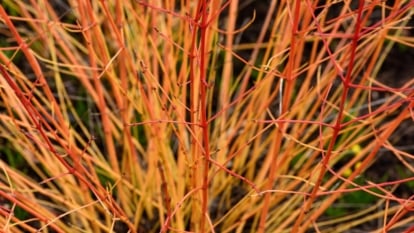
|
Plant Type Deciduous shrub Family Cornaceae Genus Cornus Species sanguinea |
Native Area From Europe to Lebanon and Iraq Exposure Full sun to partial shade Height 5-6’ Watering Requirements Regular Moisture |
Pests & Diseases Horse chestnut scale, anthracnose Maintenance Low Soil Type Well-drained Hardiness Zone 4-8 |
What Is It?
 Enjoy vibrant stems that last for years with minimal care.
Enjoy vibrant stems that last for years with minimal care.‘Midwinter Fire’ is a red-twig dogwood cultivar available worldwide in plant nurseries and online. It’s a close relative of other species in the Cornaceae family like flowering dogwood trees, Cornelian cherries, and creeping bunchberries. Because it prefers similar conditions as its relatives, you can grow them near each other in a complementary design.
Unlike other red-twig dogwoods, this species retains its bright-colored stems for years without pruning. It’s low maintenance and easy to grow, making it the perfect choice for growers who haven’t cultivated dogwoods before.
Native Area
 Provide habitat and food for wildlife with native plants.
Provide habitat and food for wildlife with native plants.The ‘Midwinter Fire’ cultivar is a variety of the European blood-twig dogwood, Cornus sanguinea. The species grows wild throughout Western Europe from Russia south through Portugal and Syria. It’s an important species for wildlife, offering habitat space, fruit, flower nectar, and pollen. You’ll have bees, birds, and butterflies all over your shrubs from spring through fall!
Though this blood-twig species comes from Europe, it’s spread in some parts of Washington, Pennsylvania, and Massachusetts. Most U.S. native dogwoods have white or bright blue fruits that look much different from the purple-black ones of this species. You can use the fruit color to tell the various species apart.
It’s always better to plant native species rather than non-native ones. Compared to non-native species, native plants offer more nectar, pollen, fruit, and habitat space for local pollinators and animals that need it most. If you’re growing this shrub in your garden, consider planting some native species next to it, like Cornus sericea, Cornus racemosa, or Cornus amomum.
Characteristics
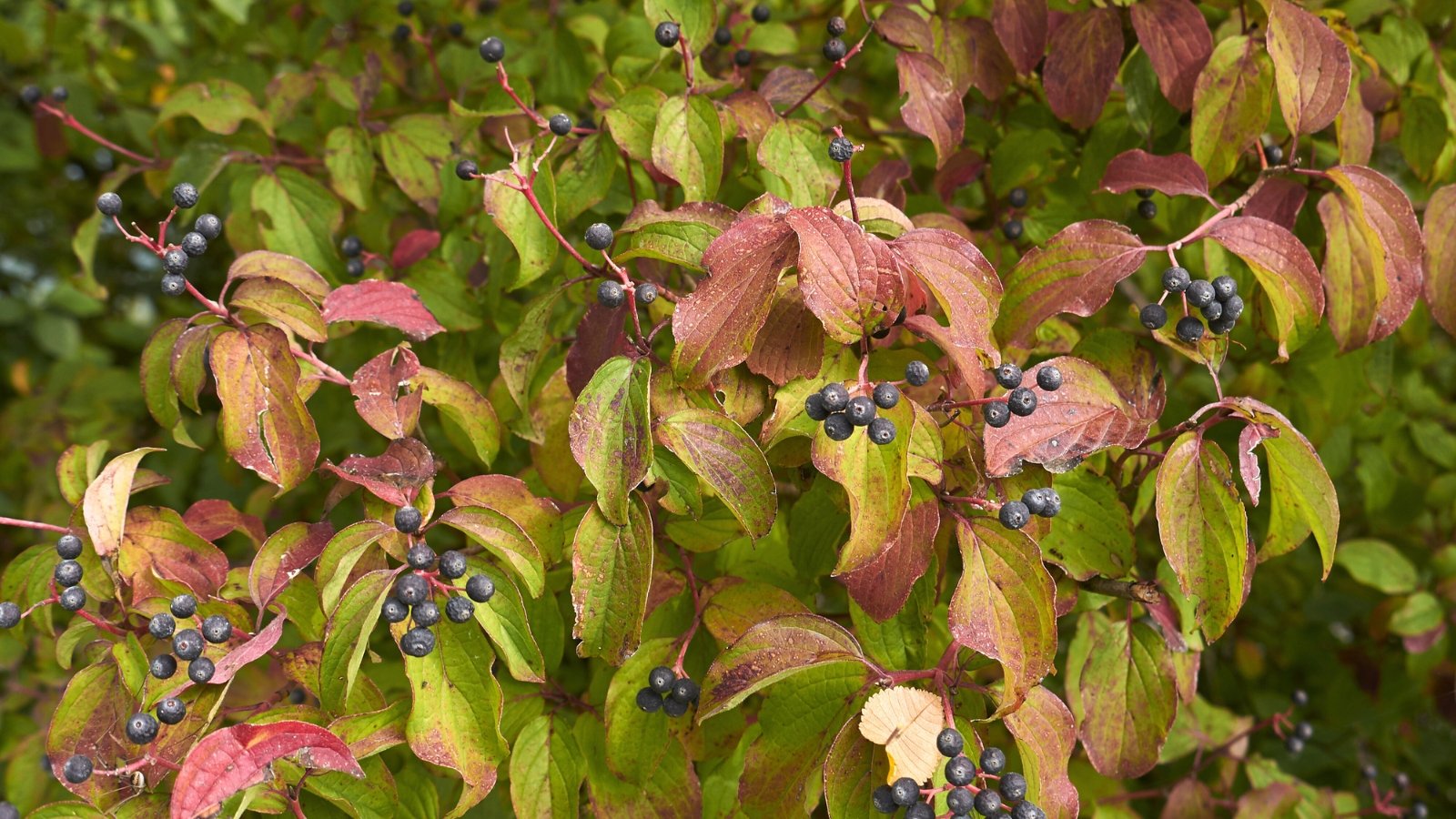 Attract birds and add color with this unique variety.
Attract birds and add color with this unique variety.I love this variety for its unique characteristics. It stays small, grows bright-colored stems, and produces delicious fruits for birds. ‘Midwinter Fire’ dogwood stands out from the crowd. If you place it alongside other cultivars with similar traits, you could find it by looking at its winter stems alone!
The leaves that form in spring reach about three inches long; they’re oval and maroon as they emerge, though they slowly turn green as the weather warms. From fertilized flowers form the purple-black fruits that birds love.
If your shrub doesn’t have fruit in autumn, try inviting beneficial pollinators to your yard to help with the task. Pollinators like bees flock to the flower clusters, rubbing pollen along the flowers’ stigmas. After pollination and fertilization, seeds begin forming in developing fruits.
Planting
Planting this shrub is simple whether you’re doing it in fall or spring. Avoid planting specimens in summer or winter, as they’re subject to extreme temperatures and freak weather events.
Find potted shrubs online and at local nurseries. Avoid purchasing seeds, as they often don’t sprout true to type. Though some websites offer seeds, they’ll sprout seedlings that resemble Cornus sanguinea rather than this unique cultivar.
Transplanting
 Plant in early fall for strong roots and less maintenance.
Plant in early fall for strong roots and less maintenance.You’re ready to transplant once you get your hands on a healthy potted specimen! Start in early fall or spring when the weather is mild, cool, and moist. This is conducive to healthy root and shoot growth, leading to less watering and maintenance later in the growing season.
Start by digging a hole that’s as deep and twice as wide as the shrub’s rootball. Use your garden’s native soil for planting, and avoid amending the hole with potting soil or compost. When you amend the hole, the dogwood’s roots stay within the amended space; they struggle to reach out into your garden’s soil as they should.
After placing the shrub in the hole, backfill the soil so it reaches the surface. Cover all parts of the rootball, but avoid putting soil high on the trunk. You want the soil to cover the roots with the trunk exposed. Water well, then add more soil if the plant sinks in the hole. You can lift the shrub a little to ensure its trunk is aboveground.
This step is optional, though it’s extremely beneficial for your specimen! Add compost or leaf mold on the dirt around the shrub’s rootball. Make a layer that’s two to three inches deep. The organic matter will decay throughout the seasons, protecting the shrub and providing it with air, nutrients, and microbes.
Growing in Containers
 Plant in a deep container for stable root development.
Plant in a deep container for stable root development.Because of its small stature, this shrub is perfect for container growing. It’ll grow well in a container a few inches deeper than the rootball. Ceramic and stone pots are the best choices, as they last many years and protect sensitive roots from frost.
Start by filling up your container with well-draining potting soil. You want the mixture to absorb water and drain the excess, that way if it rains or you overwater, the moisture falls out of the drainage holes at the bottom.
Place the shrub in the container, and add more soil around the roots until they’re no longer visible. Pat down the soil a little around the trunk to stabilize it. Water well, then add more soil if the shrub sinks. You can amend the top with a two to three-inch thick compost or leaf mold layer. Your shrub should grow well for two to three years before it needs a larger container.
How to Grow
This deciduous shrub grows well in a wide range of climates. It thrives from USDA hardiness zones 4 through 8, preferring climates with frosty winters with warm summers. Grant it protection from the afternoon sun in zone 8, and frost protection in zone 4. It’ll grow well without protection in zones 5 through 7.
Light
 Afternoon shade helps protect shrubs in warm climates.
Afternoon shade helps protect shrubs in warm climates.Blood-twig dogwoods like ‘Midwinter Fire’ grow best in full sun or partial shade with three to six hours of daily direct sunlight. They will also grow in full shade, but not as vigorously. The more light they receive the more water they need, especially when they grow in containers.
In warm zones, protect the specimens from direct sun during the afternoon on hot days. Use shade cloth or an umbrella, or plant taller plants behind the dogwoods to naturally provide them with afternoon shade.
Water
 Ensure proper moisture without soggy conditions for healthy growth.
Ensure proper moisture without soggy conditions for healthy growth.Grant your specimens water consistently during the growing season. Though this variety is drought and flood-resistant, it prefers consistent moisture. Most dogwood species grow near rivers, lakes, or other water sources where their roots spread freely into wet areas.
Avoid letting your shrubs dry out during the winter. Most plants die during the cool months because of dry rather than wet soil. Without moisture, the shrubs struggle to stay perky amidst freezing or hot temperatures. Grant enough water so the site is moist but not soggy.
Soil
 Ensure soil has good drainage for healthier, more resilient plants.
Ensure soil has good drainage for healthier, more resilient plants.Like other dogwood species, this red-stemmed variety prefers growing in fertile, well-draining soil. A loamy mix with equal amounts of sand, silt, and clay is perfect, though mixes with more sand or silt work well too.
Drainage is important, especially for potted plants. Use a well-draining mix that has perlite, vermiculite, or pumice. The drainage components create air pockets in the dirt where roots can access moisture or air.
Compost is another way to boost the soil’s absorbency and drainage capabilities. Simply amend the top of the site once or twice a year with a two to three-inch thick layer of compost. You can also add it to potting mixes for container specimens.
Fertilizing
 This plant thrives with average nutrients and compost care.
This plant thrives with average nutrients and compost care.This cultivar needs little to no fertilizer—it thrives with average amounts of nutrients common in garden soils. The easiest way to feed it is with compost; compost boosts the dirt’s quality and adds nutrients, microbes, and worms.
If you lack compost and don’t want to make it, you can also try feeding with an organic fertilizer that’s good for trees and shrubs. A mix with a rating of 4-2-4 is perfect, with 4% nitrogen, 2% phosphorus, and 4% potassium.
Maintenance
 Keep it neat with annual compost and occasional pruning.
Keep it neat with annual compost and occasional pruning.‘Midwinter Fire’ dogwoods require little maintenance because of their small stature! Add compost to the site annually, and prune away any dead or diseased wood as you notice it.
With pruners or loppers, you may cut back mature specimens to promote brighter colors on the stems. Old branches tend to grow brown over time, losing their vivid hues. Simply prune any thick woody stems in fall or spring, leaving the bright-colored ones alone.
Propagation
‘Midwinter Fire’ dogwood propagates easily through a variety of methods. Use whichever is easiest for you and your garden setup. If you have many plants that form thickets, division or layering is a good propagation method for you. You need many mature specimens for those two methods to work.
Cuttings are more difficult to propagate than divisions or layers, though you can take them off any sized shrub. Blood-twig types root readily from cut stems—they’ll sometimes form roots when you put them directly into the ground!
Cuttings
 Try cutting propagation in containers or directly in soil.
Try cutting propagation in containers or directly in soil.There are two methods for cuttings: in the ground or in pots. In-ground propagation is easier, as it relies on natural conditions to work successfully. Simply take six-inch or longer cuttings in early spring and stick them in the ground. Ensure their soil stays moist, and watch for buds to form. After the buds open with flowers and leaves, you can safely transplant the rooted stems wherever you’d like them to grow.
Container cuttings are more difficult to propagate, though you can try growing them in the fall or spring. Start with six-inch cuttings, pruning the stems off on their internodes. Nodes are where new growth emerges, while internodes are the spaces in between. You want the cuttings to have a bit of the internode below their lowest node.
Set the cuttings in containers with fresh potting soil, then set the containers in trays with humidity domes outdoors. Place the cuttings under dappled or indirect light until they form roots and new shoots. Keep them moist throughout the process for the best rooting results.
Division
 Divide large shrubs in autumn to rejuvenate and propagate.
Divide large shrubs in autumn to rejuvenate and propagate.Division is a method that works well on large, mature shrubs. You’ll remove the specimen from its hole, separate it into two to four pieces, and transplant the new pieces. It’s perfect for reinvigorating old shrubs, and you get new plants to plant in the process!
Start by carefully digging the shrub out of its hole during the autumn months. Set the shovel down three feet or more away from the rootball to avoid cutting the tender roots. Dig on all sides until the specimen freely comes out of its hole. Lift it, then wash away large clumps of dirt so you can inspect the roots.
Separate the one shrub into two to four parts with a pruning saw. Ensure each part has some roots attached so they transplant well. Prepare new planting holes, and transplant the cut pieces into other parts of your garden. Water the transplants well, and watch as they take off with new growth in spring!
Layering
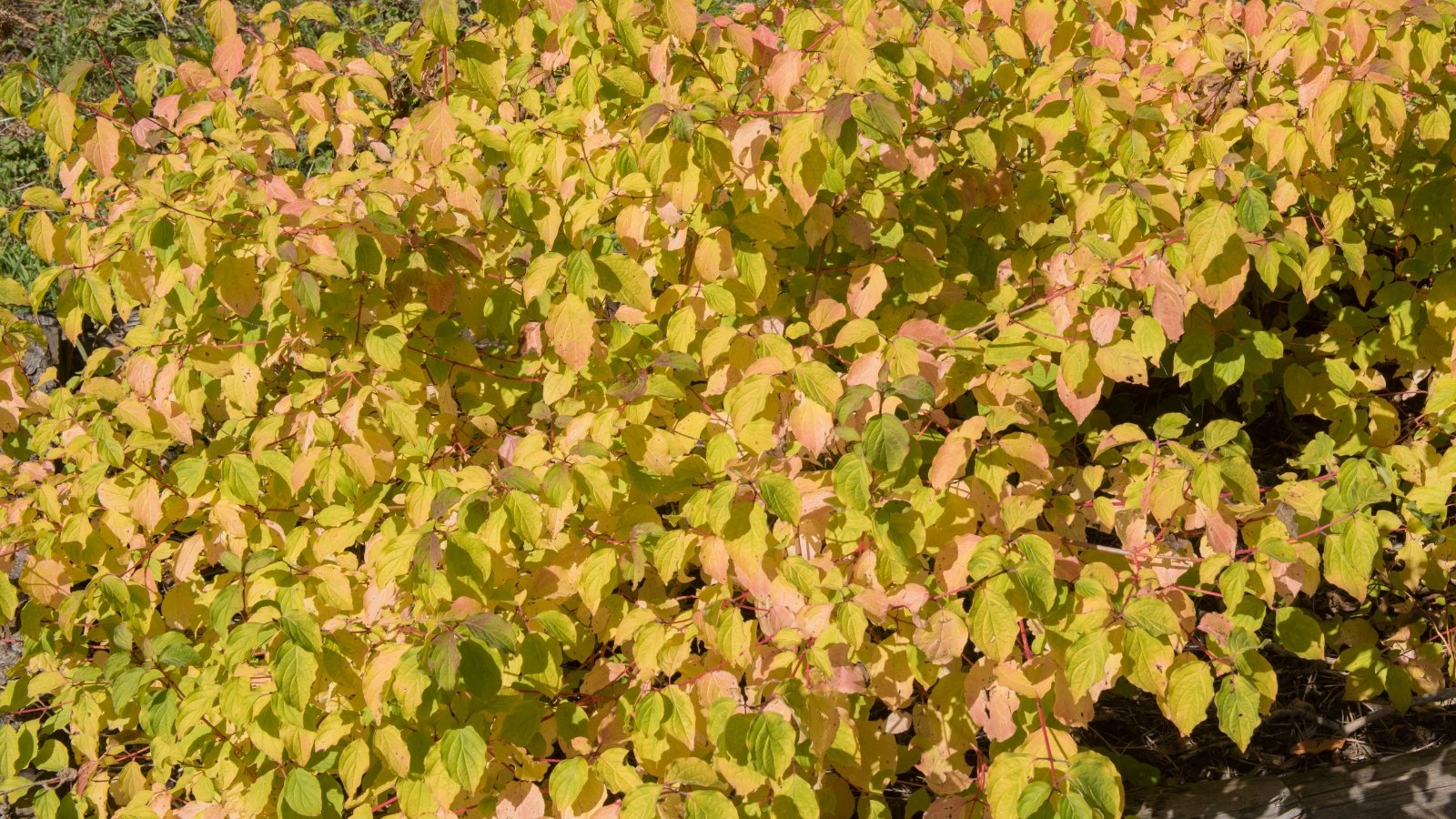 Touching soil encourages rooted stems to grow into plants.
Touching soil encourages rooted stems to grow into plants.Layering is a fun process that doesn’t require any pruning at first! It relies on the natural tendencies of dogwoods—they root readily when their stems touch the ground. There are a few ways to layer shrubs, though this method is the easiest.
- Nick a stem with pruners, cutting through the bark but leaving the stem attached.
- Bury the nicked portion underground with the stem’s tip emerging from the soil.
- Wait two to three months for roots to form on the nicked portion.
- Prune the stem off the mother plant below where the new roots are.
- Dig up the new plant and transplant it into fresh soil.
You can also try air-layering, tip layering, or trench layering. The key is submerging cut stems in moist soil and waiting for them to root. It doesn’t matter how you do it, so long as it works for you!
Common Problems
Relatively pest and disease-free, this dogwood cultivar is perfect for lazy gardeners! Though you may occasionally see scale or anthracnose affecting unhealthy specimens, there are treatment methods that remove these issues from your garden.
Pests
 Scales might show up but won’t damage your plant much.
Scales might show up but won’t damage your plant much.Horse chestnut scales sometimes infest the shrub’s stems and branches. They look like brown, hard-covered insects, and they often have white, fuzzy egg deposits underneath them. The eggs remain after the adults fall off, hatching into new scales that deposit more eggs.
Though they seem like a major issue, they don’t often cause harm to the host plant. With gloves on, you can smush them or rub them off the stems. Avoid spraying pesticides as they’ll interfere with predators that may eat the scales.
Diseases
 Prune infected parts regularly to keep the plant healthy.
Prune infected parts regularly to keep the plant healthy.Dogwood anthracnose may infect weak specimens. Anthracnose is a fungus that spreads via spores onto susceptible host plants. It causes black spots on leaves, dead leaves, cankers, and dying stems. It’s more common on weak plants in the shade, so give your plant full sun or partial shade to keep it at bay.
If you spot an infection, prune off any dead or diseased parts with sterilized pruners. Monitor your shrub to see if the fungus reappears, and continuously remove infected parts until the fungus disappears.
Frequently Asked Questions
This cultivar doesn’t require pruning, though you can reinvigorate old shrubs with cuts. In early spring or fall, remove any old, brown stems and leave young, brightly colored ones.
This shrub will grow in partial to full shade. It prefers full sun or partial shade, and it’ll perform poorly in full shade or under dappled sunlight. You may see more anthracnose infections on shaded specimens.
This is a popular cultivar! It’s available in local nurseries, from online plant shops, and as cuttings from your neighbor! If you see a mature specimen, ask the homeowner if you can propagate it; promise some rooted stems in return and I swear they’ll say yes!


 7 months ago
79
7 months ago
79

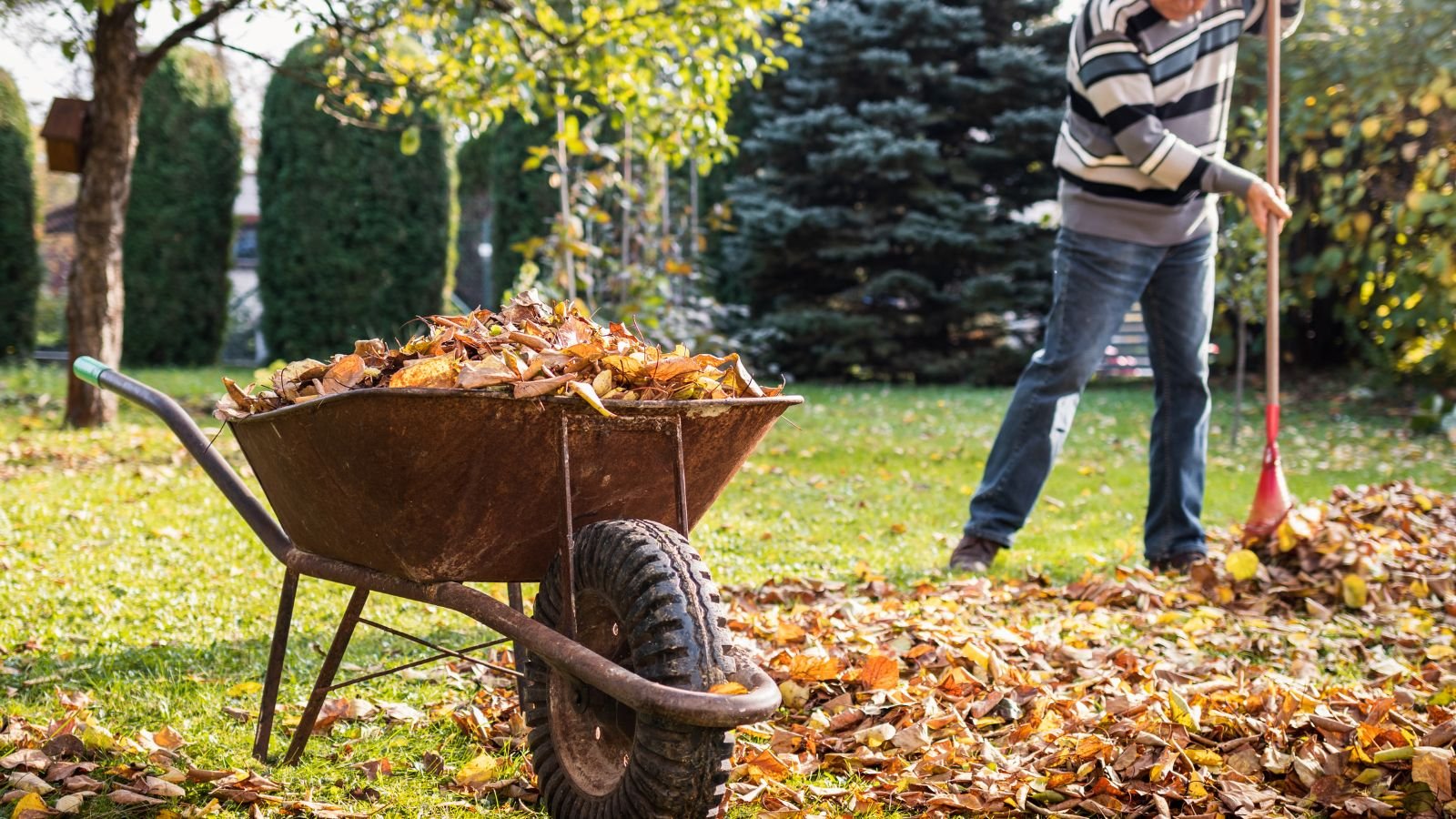
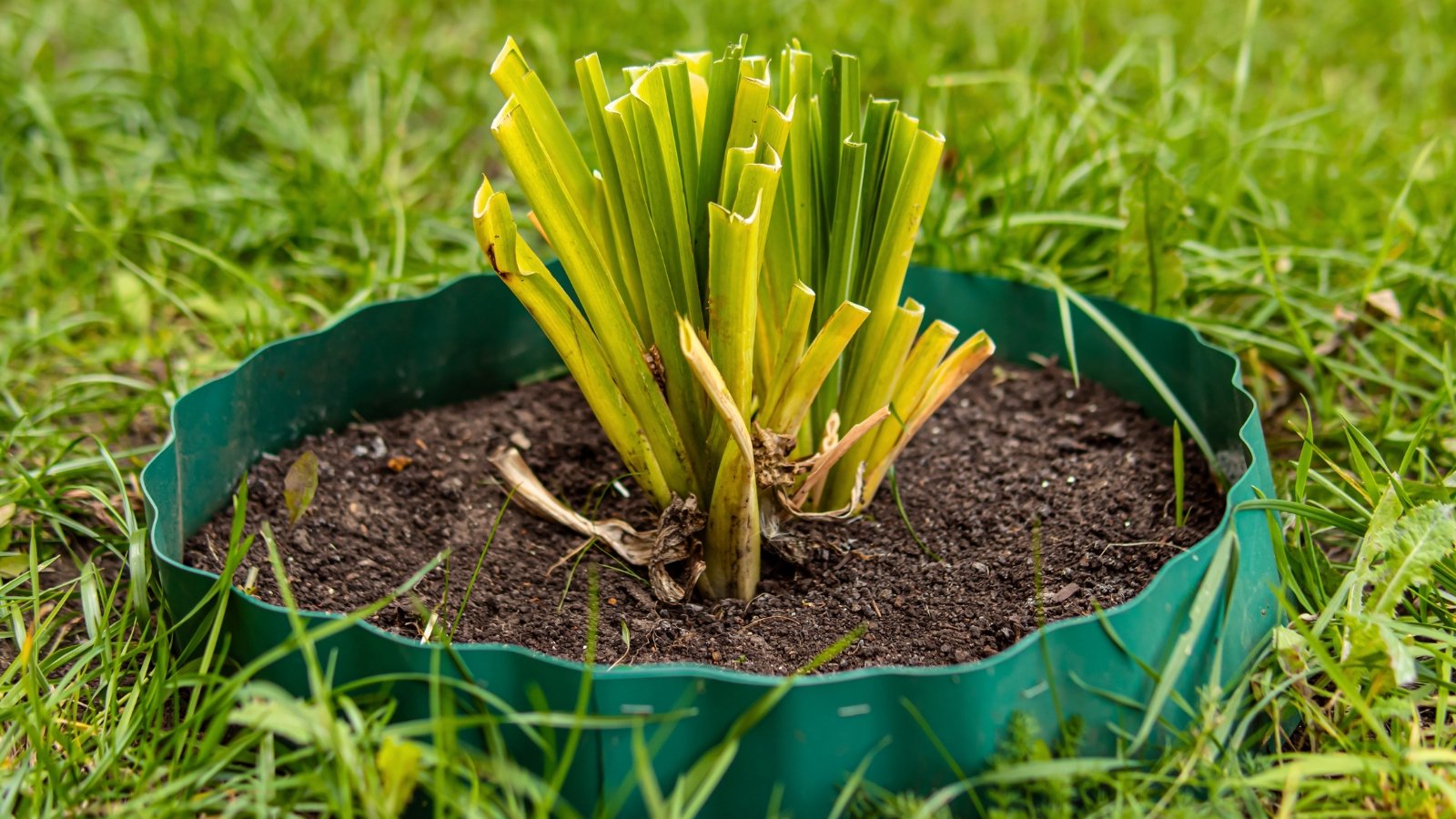


















 English (US) ·
English (US) ·  French (CA) ·
French (CA) ·